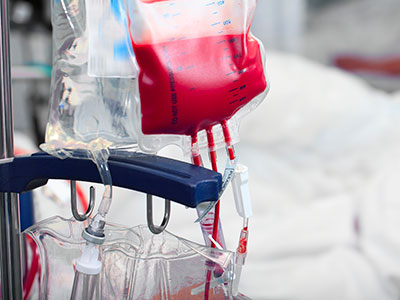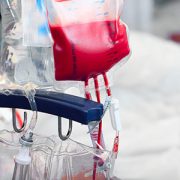Hydroxycarbamide effective in sickle cell stroke prevention
 Hydroxycarbamide treatment is on par with blood transfusions for preventing stroke in patients with sickle cell anemia. What’s knownStrokes are common and devastating complications for patients with sickle cell anemia, often leading to severe and lifelong motor and neurocognitive problems for people with this congenital blood disorder. Results of a clinical trial published in 1998 showed that having regular blood transfusions could reduce the risk of having a first stroke by 90 percent in children with sickle cell anemia. Since then, doctors have employed this prophylactic treatment widely. However, blood transfusions can be painful, inconvenient and carry substantial risks themselves — including the potential of blood-borne infections, iron overload and immune-related reactions to blood products. Finding a way to reduce stroke risk without over-relying on blood transfusions could substantially benefit patients with sickle cell anemia. What’s newA team of researchers, including Naomi L.C. Luban, M.D., a Children’s National Health System hematologist and laboratory medicine specialist, tested transfusions against a drug treatment called hydroxycarbamide in a clinical trial to see if the pharmaceutical intervention could reduce strokes at least as well as transfusions. The clinical trial, known as “TCD With Transfusions Changing to Hydroxyurea (TWiTCH),” assigned 60 patients with sickle cell anemia who had abnormally high transcranial Doppler (TCD) flow velocities—a measure of blood flow in the brain that suggests elevated risk of stroke—to receive hydroxycarbamide instead of transfusions. The research team compared the outcomes for these patients with 61 other patients who received standard prophylactic transfusions. Over the 24-month study period, neither group experienced any strokes, although three transient ischemic attacks (a temporary blockage of blood flow in the brain) occurred in each group. These comparable findings suggest that hydroxycarbamide treatment, also known as hydroxyurea, is on par with transfusions for preventing strokes in patients with sickle cell anemia. Questions for future researchQ: Does hydroxycarbamide offer a long-term way for patients with sickle cell anemia to avoid transfusions? Source: “Hydroxycarbamide versus chronic transfusion for maintenance of transcranial doppler flow velocities in children with sickle cell anemia—TCD With Transfusions Changing to Hydroxyurea (TWiTCH): A multicentre, open-label, phase 3, non-inferiority trial.” Ware, R.E. B. R. Davis, W. H. Schultz, R.C. Brown, B. Aygun, S. Sarnaik, I. Odame, B. Fuh, A. George, W. Owen, L. Luchtman-Jones, Z.R. Rogers, L. Hilliard, C. Gauger, C. Piccone, M.T. Lee, J.L. Kwiatkowski, S. Jackson, S.T. Miller, C. Roberts, M.M. Heeney, T.A. Kalfa, S. Nelson, H. Imran, K. Nottage, O. Alvarez, M. Rhodes, A.A. Thompson, J.A. Rothman, K.J. Helton, D. Roberts, J. Coleman, M.J. Bonner, A. Kutlar, N. Patel, J. Wood, L. Piller, P. Wei, J. Luden, N.A. Mortier, S.E. Stuber, N. L. C. Luban, A.R. Cohen, S. Pressel and R.J. Adams. Published by The Lancet on Feb. 13, 2016.
|











